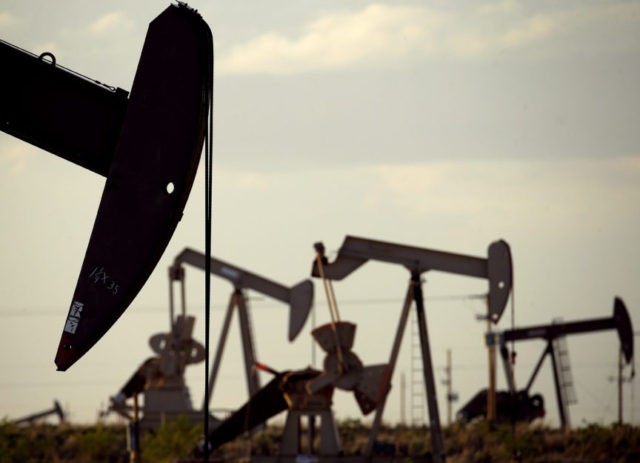The Eagle Ford shale formation, a Texas oil and natural gas powerhouse, appears primed for another energy boom. According to the latest report from the U.S. Geological Survey (USGS), the land sits on billions of barrels of untapped oil and natural gas.
The feds estimate these shale fields contain approximately 8.5 billion barrels of oil, 66 trillion cubic feet of natural gas, and 1.9 billion barrels of natural gas liquids, all undiscovered and technically recoverable resources in continuous accumulations.
“Texas is so well known for its history of oil and gas production that it’s almost synonymous with petroleum,” said Dr. Jim Reilly, USGS director, in a statement. “Texas continues to remain in the forefront of our nation’s energy supply chain with remarkable increases in production and reserves due to the revolutionary unconventional techniques used to release previously unrecoverable resources.”
The Eagle Ford shale formation occupies a formidable region of real estate, stretching from the Texas-Mexico border to the west, across portions of southern and eastern Texas, and over the Texas-Louisiana border. The USGS says that while the Eagle Ford Group has been known to contain oil and gas, it was only in 2008 that production of these “continuous” resources took off in East Texas.
The assessment defines undiscovered resources as those “estimated to exist based on geologic knowledge and statistical analysis of known resources.” Recoverable resources are underground oil and gas that can be captured through existing technology and industry practices such as hydraulic fracturing, also known as “fracking.”
The USGS acknowledged that the assessment did not evaluate whether or not the estimated reserves in the shale formation would be profitable to produce. Still, the report calls the Eagle Ford “one of the most prolific continuous accumulations of oil and gas in the United States.” It is the second biggest shale play in the nation behind the Permian Basin, which is located nearby in West Texas.
Kate Whidden, a USGS scientist and the report’s lead author, noted that usually shale formations produce oil or gas, but she says the Eagle Ford is rich in both. “This assessment is a bit different than previous ones because it ranks in the top five of assessments we’ve done of continuous resources for both oil and gas,” she said.
Oilprice.com suggested the USGS assessment could signal a renewed oil boom in the region. Eagle Ford production largely peaked in 2014. The trade publication noted some drillers are focusing more on the Eagle Ford again for a variety of reasons including pipeline woes in the Permian. They highlighted that, currently, the Permian is feeling the pinch of lacking pipeline capacity able to carry pumped crude to Houston-area refineries.
In 2016, the USGS discovered the largest shale formation of its kind in the Midland-Odessa region of the Permian Basin. Breitbart Texas reported it may yield 20 billion barrels of crude oil, 16 trillion cubic feet of natural gas, and 1.6 billion barrels of natural gas liquids. Data from independent oil and gas consultants Rystad Energy also revealed 60 billion barrels of shale oil lie beneath Permian land.
Recently, Breitbart Texas reported that IHS Markit released its Permian outlook, forecasting a “stunning” level of growth over the next five years. The report anticipated that oil from the Permian Basin will comprise more than 60 percent of net global production by 2023. It also foresaw Permian output doubling to reach 5.4 million barrels per day, a level of production that will exceed output by every OPEC member nation except for Saudi Arabia.
Follow Merrill Hope, a member of the original Breitbart Texas team, on Twitter.

COMMENTS
Please let us know if you're having issues with commenting.